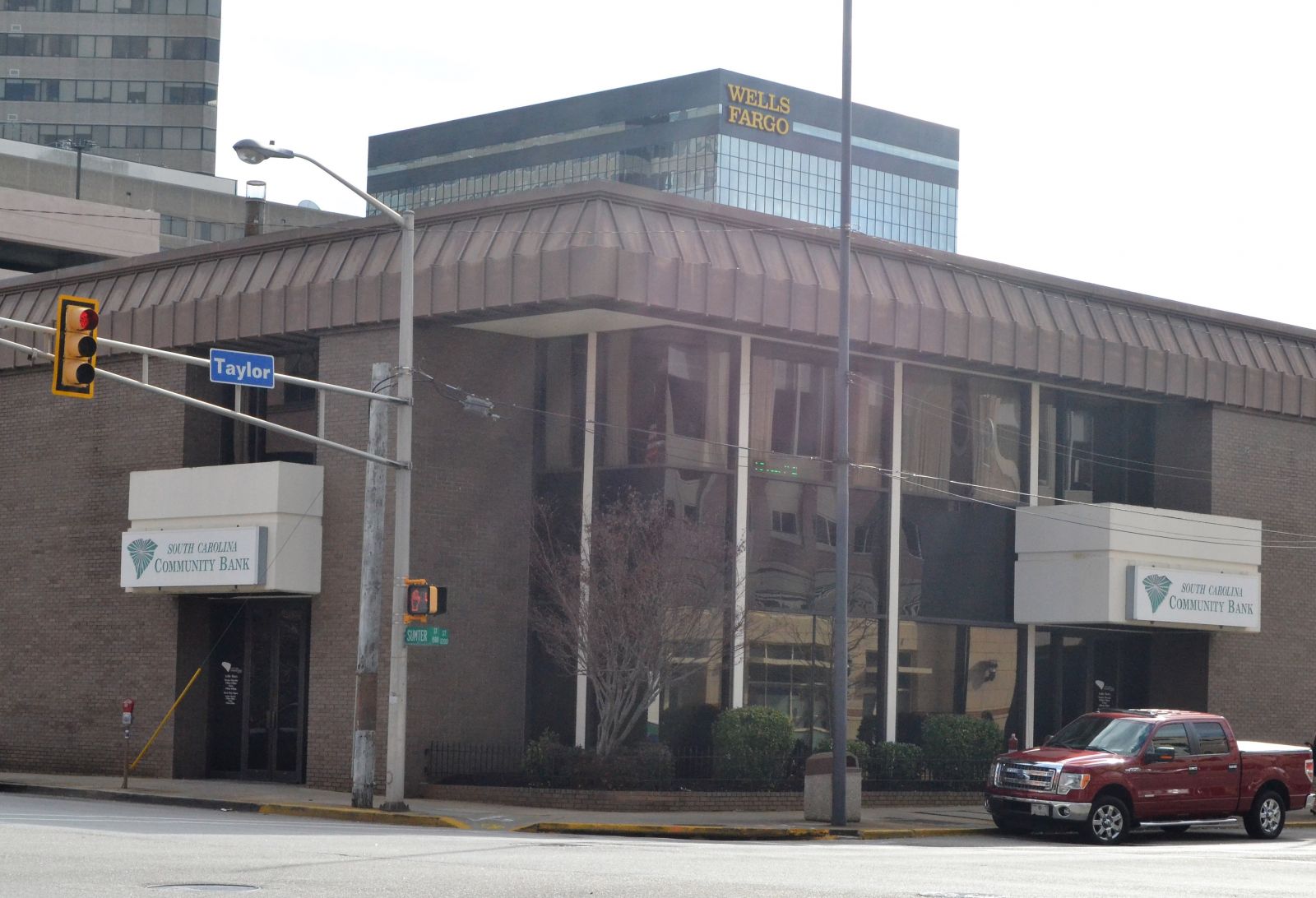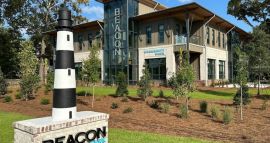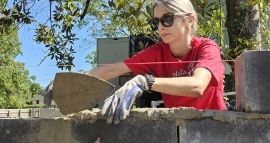S.C. Community Bank bullish on its future
Melinda Waldrop //March 5, 2018//
There’s a story University of South Carolina associate history professor and local historian Bobby Donaldson likes to tell to illustrate the importance of Victory Savings Bank.
“In the 1950s, when African-Americans in Orangeburg and Summerton were challenging school segregation, many were ostracized and fired from their jobs,” Donaldson said. “There was a national fundraising campaign, and thousands of dollars poured into South Carolina through the Victory Savings Bank.”
Victory Savings opened in 1921 at 1107 Washington St. as the first black-owned bank in South Carolina, and it played a crucial role in helping African-Africans go to college and buy homes for decades. Prominent civil rights advocate Modjeska Monteith Simkins held various positions at the bank.
“In the midst of segregation, the anticipation was the bank would help many African-American families and businesses realize their dreams,” Donaldson said. “At one time, it was the bank in the community.”
Those times have changed. Victory Savings became S.C. Community Bank in 1999. During the economic crisis of 2008, it was plagued by problem loans and other struggles. In 2010, S.C. Community Bank landed on the unofficial problem bank list, a confidential list maintained by the FDIC and compiled by various websites from public sources; it remained there as of November 2017 because of problematic commercial real estate loans.
 Change, however, is coming again, says new president and CEO Dominik Mjartan.
Change, however, is coming again, says new president and CEO Dominik Mjartan.
Mjartan is in his fourth month at the helm of S.C. Community Bank after 12 years as a senior executive officer at Southern Bancorp, a $1.2 billion community development bank based in Arkansas. He said S.C. Community Bank has made significant progress in recent months.
The bank has raised more than $11 million in new deposits and closed more than $3 million in new loans to small businesses, nonprofits and individuals, Mjartan said. It has also raised $2.15 million in new common equity investments and reduced troubled assets from $11.9 million as of Dec. 31, 2016, to $2.9 million as of last Dec. 31.
And S.C. Community Bank anticipates being formally removed from the troubled bank list by the FDIC in the next few weeks, Mjartan said.
“We’ve cleaned up,” said Mjartan, who credited long-time members of the bank, notably chairman Paul Mitchell, with a lot of the heaving lifting. “When you come into a bank that’s in distress and you don’t know what’s there in terms of your most important asset, which is the people. The people that are here are so committed and smart and capable. They work hard, from the chairman down to your tellers. They want to see the bank thrive.”
The numbers are just part of the story, though, said Mjartan, 39, who came to the United States from Czechoslovakia when he was 16 with $500 to his name. He says S.C. Community Bank, one of 23 majority African-American owned banks in the U.S. and a U.S. Treasury-certified Community Development Financial Institution, can reposition itself – a process that will include a new location and a new name – while remaining true to its core founding principles.
“Banking is a mission-driven profession for me, and I think it is to most good community bankers,” Mjartan said. “I believe, and this bank will prove it, that margin and mission are mutually reinforcing. In fact, doubling down on mission, finding those opportunities that have been historically excluded, is actually going to be more profitable than trying to be everything to everyone.”
Mjartan acknowledges, though, that the bank’s focus on working with traditionally underserved communities is not without the perception of greater risk.
“This bank intentionally focused on the most difficult and risky part of the population, by banking standards,” he said. “You’ve serving people that may be savvy businesspeople, that may have all the capacity in the world, but historically, because of the systemic issues in this country, they’ve been excluded for generations from the system. (In 2008), the recession hit, and as we know, during a recession, those that have the least cushion in their net worth and their incomes suffer the most. So it was a perfect storm.”
AVOIDING DANGER THROUGH DIVERSIFICATION
How, then, can S.C. Community Bank, into which Mjartan has invested significant amounts of his own money, avoid such future turmoil?
“Diversification,” he said. “We’re developing three or four lines of business that are in different industries, and even in different geographies, so if we do have another recession, we’re not fully invested in commercial real estate. We’re not fully invested in churches. We’re not fully invested in multi-family development.”
Mjartan said the bank is focused on finding niche opportunities – small businesses, or people looking to start their own businesses, as well as local industries with proven track records in underserved communities.
“In any business, you can’t be good at everything. So what are those things that we can be good at, or better than others?” Mjartan said. “I think our size, our ability to be nimble, our ability to innovate, to move quickly to fill voids in the economy, could be our advantage.”
To that end, the bank is beginning the process of relocating its offices from 1545 Sumter St., near the corner of Taylor Street, closer to the heart of downtown at 1241 Main St., a space previously occupied by Certus Bank. The bank will also get a yet-to-be-announced new name in the next few weeks, Mjartan said.
“We’re not looking to have a large branch network, but we believe we need to create a new environment for our customers where everyone feels included,” he said. “The location we’re in right now is a great location because there’s a lot of traffic around it, but it is so associated with the old bank that I think it’s going to be hard to attract people with different backgrounds.
“For our existing customers, I think it’s important to be able to say to them, ‘You matter to us. You deserve to have a nice, welcoming, comfortable, inviting place to come sit down.’ To do that in this building, we’d have to spend so much money that economically, it just does not make any sense.”
The new branch will not have teller lines, Mjartan said. Customers will instead walk into an open atmosphere more like a coffee shop with advisers available to answer questions. Upgraded technology will include new loan administration software, a focus on mobile banking and a state-of-the-art ATM ready to receive deposits.
The bank’s current location will remain open for the foreseeable future, Mjartan said, to accommodate the several hundred customers who use its drive-thru each week. Similarly, while the new name will better position the bank to work with regional and national customers, it will also reflect the institution’s past, Mjartan said.
“It’s not that we’re trying to abandon our historic mission. In fact, we’re trying to enhance it,” he said. “We want to be able to tell our existing customers and our new customers, ‘Come have a different experience with financial services.’ ”
Donaldson said it has become clear that S.C. Community Bank must pivot to continue fulfilling its mission.
“There is a recognition that it needs to rebrand the core audience,” Donaldson said. “Not many people who are in Columbia now even know of this long and storied history that we’re talking about and therefore may not feel any obligation to patronize and be supportive of the bank.”
Even if customers aren’t well-versed in the bank’s history, they will appreciate its commitment to community, Mjartan said.
“We’re not asking for anyone to pay admission premium for banking with a bank that has explicitly focused on underserved people and places. We’re not asking them to get worse service,” he said. "We're asking them to expect everything they'd expect from everyone else, but know, when they ask, 'Where does my money spend the night?', they'll know it's spending the night in Columbia, South Carolina, or in places and communities that are in desperate need for economic opportunities.
“The money is here in our local communities. The money is invested with a purpose. It’s not invested purely with a profit motive.”
‘BANKING WITH A CONSCIENCE’
Change is not a new concept at S.C. Community Bank, where Mjartan is the second CEO since April 2016.
“The big difference, frankly, with the previous leadership was none of them had a personal stake in the bank,” Mjartan said. “This not a job for me. This is a commitment. … You make very different decisions when you know that you’re impacting your family.
“Before, the strategy was either, let’s focus on a small part of the community or let’s try to be everything for everyone … We’re trying to complement what community banks in this community and other communities are doing. That’s a radical departure from that perspective.”
In fact, Mjartan said, some of the most solid – and somewhat surprising – support he’s experienced since coming to Columbia has come from other banks.
“We’ve gotten deposits from local banks. We’ve gotten opportunities to participate in loans. They want us to succeed,” Mjartan said. “They understand we’re not their competitor. They know we want to help their community thrive, which is going to help them and their shareholders.
“We’ve gotten several $250,000 CDs from local banks, as well as banks around the country. People see what we’re doing. They want us to succeed.”
Mjartan has also met memorable customers who illustrate the bank’s mission, including a young man who needed to purchase a piece of equipment to get a side business off the ground.
“He was not your prime borrower,” he said. “He needed a little help to think through his business. That person doesn’t fit a lot of boxes, but we don’t have a box. We have very rigorous credit standards and underwriting standards just like any other bank, but we’re focusing on those people that are too small or maybe too complex to fit high-volume, large banks.”
Another, older customer told Mjartan about recently selling the business S.C. Community Bank helped him establish 15 years ago.
“Now he’s created pretty substantial wealth for his family and continues to bank with us,” Mjartan said. “Banks can be a driver of economic empowerment and economic self-sufficiency and can support people in building better lives for themselves, if it’s done responsibly. It’s banking with a conscience.”
Donaldson hopes Mjartan is right.
“Here’s a bank that thrived and succeeded under black leadership and patronage. There is great hope that this is one of those institutions that will persevere despite all the challenges that a small bank of its type experiences,” Donaldson said. “It’s very important for the bank to capitalize on a history of service and support and figure out how to use that history to appeal and to reach broader and more diverse audiences while not losing the strong foothold it has among African-Americans of the city.”
p

















